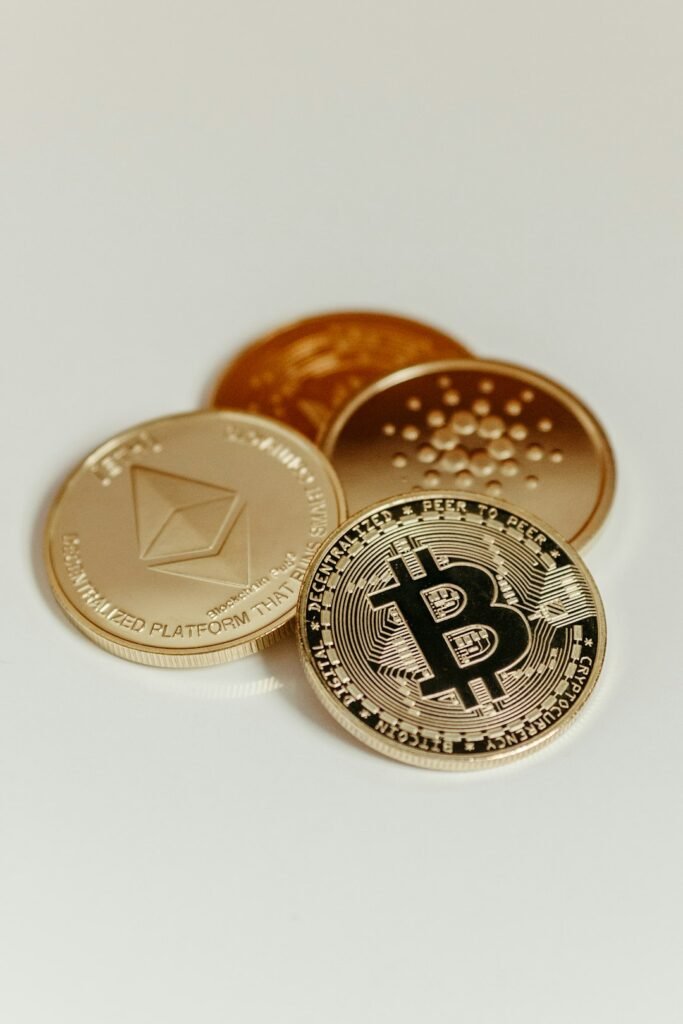The Unbreakable Vault: How Centralized Exchanges Fortify Your Crypto with Cold Storage and 2FA In the dynamic and often unpredictable world of cryptocurrency, the question of where to safely store your digital assets is paramount. While the ethos of "not your keys, not your coins" champions self-custody, the convenience, liquidity, and advanced trading features of Centralized Exchanges (CEXs) remain irresistible for millions. The critical bridge between using these powerful platforms and sleeping soundly at night is understanding and leveraging their advanced security measures. For the modern trader and investor, a CEX that prioritizes robust security protocols isn't just an option; it's a necessity. This article delves into the core security infrastructure that defines a top-tier centralized exchange, focusing on the two pillars of modern crypto security: the impenetrable fortress of cold storage and the essential gatekeeper of two-factor authentication (2FA). The First Line of Defense: Understanding Cold Storage At the heart of any secure centralized exchange is its custody solution. Where does the platform store the billions of dollars in digital assets under its management? The answer, for all reputable exchanges, is cold storage. What is Cold Storage? Cold storage, or cold wallet storage, refers to keeping cryptocurrency reserves completely offline, disconnected from the internet. This isolation creates a formidable barrier against online threats, such as hackers, malware, and unauthorized network access. Imagine a bank vault deep underground versus a cash register on a countertop; cold storage is the digital equivalent of that underground vault. How it Works: Private keys—the cryptographic codes that control access to crypto funds—are generated and stored on offline devices. These can range from specialized hardware security modules (HSMs) in secure, undisclosed locations to simpler hardware wallets. Without an internet connection, these keys are virtually immune to remote cyber-attacks. The Staggering Statistics of Security The commitment to cold storage is not just a talking point; it's a quantifiable metric of an exchange's security posture. Leading exchanges publicly state that they hold the vast majority of user funds in cold storage. For instance, Kraken, a platform renowned for its security focus, has reported storing over 95% of user assets in cold storage. This practice is industry-standard among top-tier CEXs like Binance and Coinbase. By ensuring that only a small fraction of assets—necessary for daily operational liquidity—are kept in "hot wallets" (internet-connected wallets), exchanges drastically reduce the potential loss in the unlikely event of a security breach. The Guardian at the Gate: The Non-Negotiable Need for Two-Factor Authentication (2FA) If cold storage protects the exchange's treasury, then Two-Factor Authentication (2FA) protects your individual account. It is the most critical security step any user can and must enable. What is 2FA and Why Does It Matter? Two-Factor Authentication adds a second layer of verification to your login process. Instead of relying solely on something you know (your password), it requires something you have (your mobile device). This means that even if a malicious actor somehow obtains your password, they cannot access your account without also possessing your physical device. The Process: After entering your correct password, the exchange prompts you for a time-sensitive, randomly generated code. This code is typically delivered via: An Authenticator App: (e.g., Google Authenticator, Authy) This is the most secure method. The app generates codes on your phone that are not transmitted over SMS networks. SMS Text Message: A code is sent to your registered phone number. While better than nothing, this method is vulnerable to SIM-swapping attacks, where a hacker fraudulently gains control of your phone number. Hardware Security Keys: (e.g., YubiKey) The most robust option, involving a physical device you plug into your computer or connect to via NFC. Enabling 2FA is a simple, five-minute process that provides an exponential increase in account security. It is your personal responsibility to activate it, and on any reputable CEX, it is no longer an optional feature but a fundamental requirement for safe participation in the ecosystem. Beyond the Basics: A Multi-Layered Security Fortress While cold storage and 2FA are the cornerstones, a truly secure centralized exchange employs a comprehensive, multi-layered security strategy. Advanced Encryption and Monitoring All data transmitted between your device and the exchange, including personal information and transaction details, is protected by bank-grade encryption (TLS/SSL). Furthermore, exchanges deploy around-the-clock monitoring systems that automatically flag suspicious activity, such as login attempts from unrecognized devices or large, unusual withdrawal requests. Regulatory Compliance: KYC and AML Procedures Know Your Customer (KYC) and Anti-Money Laundering (AML) procedures, while sometimes seen as an inconvenience, are crucial for the long-term health and legitimacy of the crypto space. By verifying user identities, exchanges prevent fraud, deter illicit activities, and create a safer trading environment for everyone. This regulatory compliance is a key differentiator between reputable platforms and less-scrupulous operators. Insurance Funds: A Final Safety Net Acknowledging that no system is entirely infallible, several major exchanges have established insurance funds to protect user assets. The most famous example is Binance's Secure Asset Fund for Users (SAFU), an emergency insurance fund launched in 2018 that holds a significant amount of capital to cover user losses in the event of a security breach. This provides an additional layer of user confidence and demonstrates a long-term commitment to asset protection. Your Role in the Security Partnership Security is a shared responsibility. The most advanced security infrastructure in the world can be undermined by careless user behavior. Here is your part in the partnership: Enable 2FA Immediately: Use an authenticator app, not SMS, if possible. Use Strong, Unique Passwords: Create a complex password used exclusively for your exchange account. A password manager can help. Beware of Phishing Scams: Always double-check URLs and never click on links in unsolicited emails or messages. Official exchanges will never ask for your password or 2FA code. Withdraw to Personal Wallets for Long-Term Holding: For significant sums you do not plan to trade actively, consider transferring them to your own secure hardware wallet. This embodies the "not your keys, not your coins" principle while allowing you to use CEXs for their intended purpose: trading. Conclusion: Trust, But Verify The narrative that centralized exchanges are inherently insecure is outdated. The leading CEXs of today have invested millions in building security infrastructures that rival, and in some cases surpass, those of traditional financial institutions. The combination of offline cold storage for the bulk of assets and mandatory two-factor authentication for user accounts creates a powerful defense-in-depth strategy. By choosing an exchange with a transparent and robust security track record and by diligently managing your own account security, you can confidently leverage the immense power of centralized platforms. In the quest for financial sovereignty, knowledge is your greatest asset. Understanding the "unbreakable vault" of cold storage and the "guardian at the gate" that is 2FA empowers you to navigate the crypto landscape not with fear, but with informed confidence.












